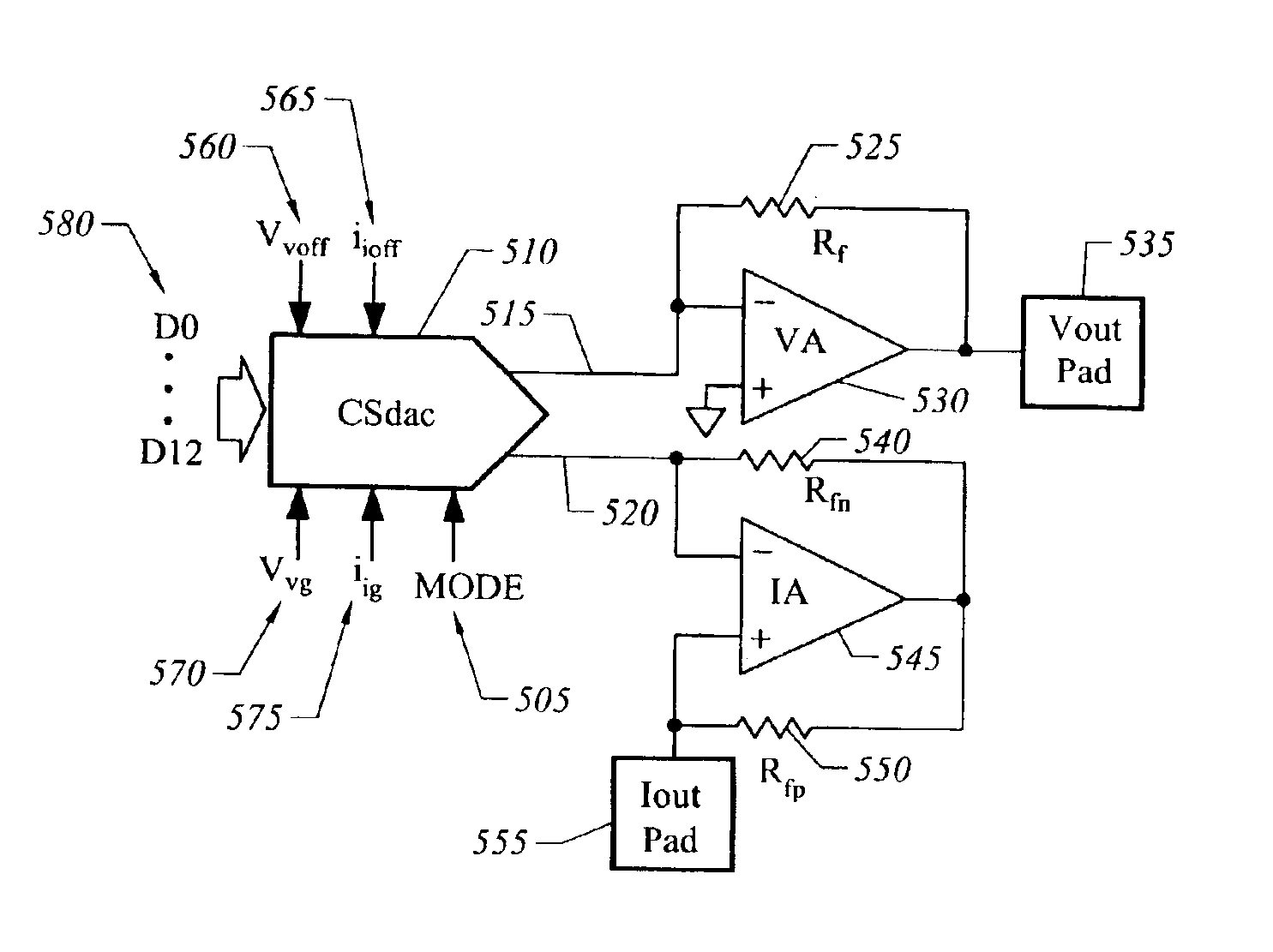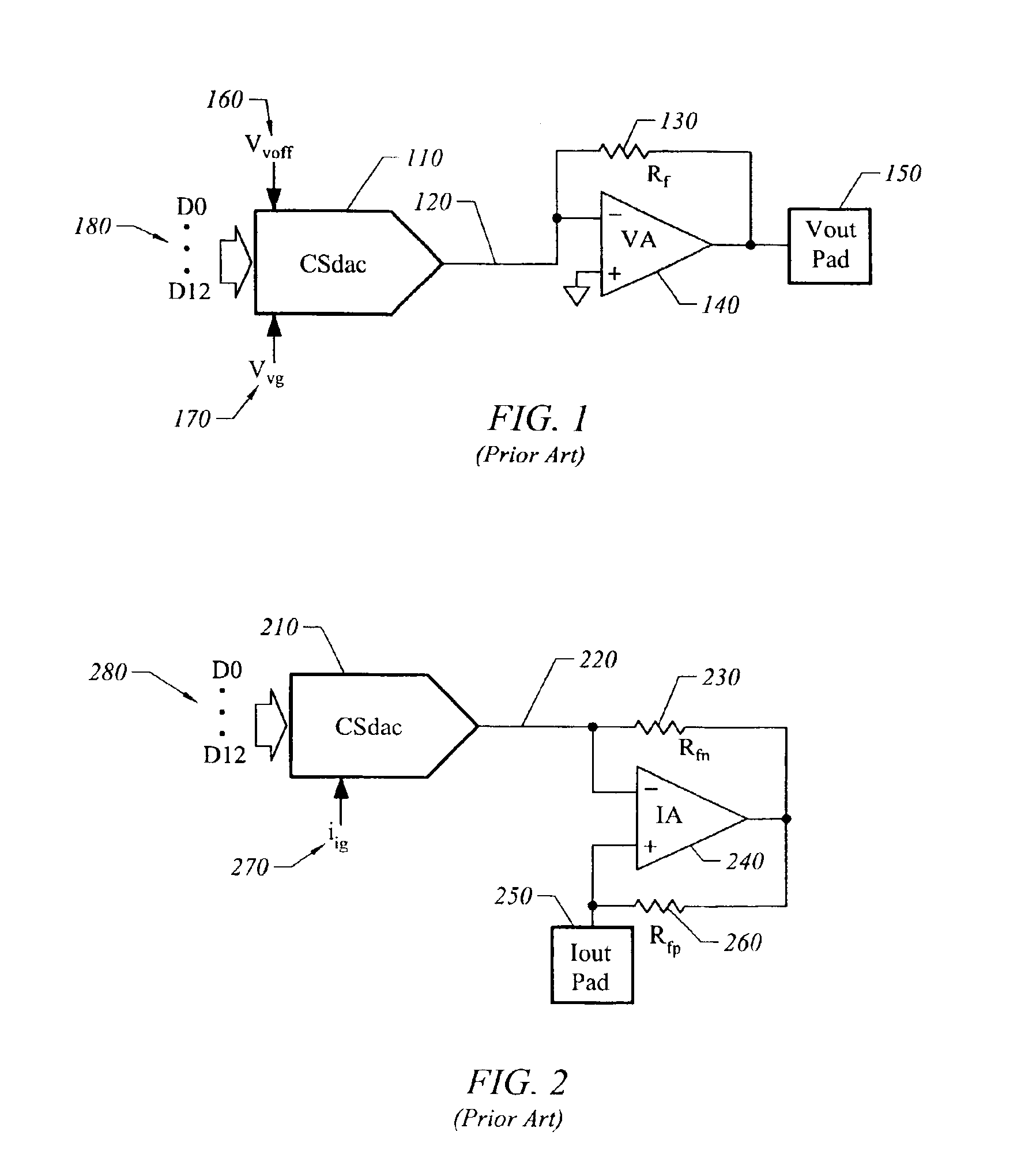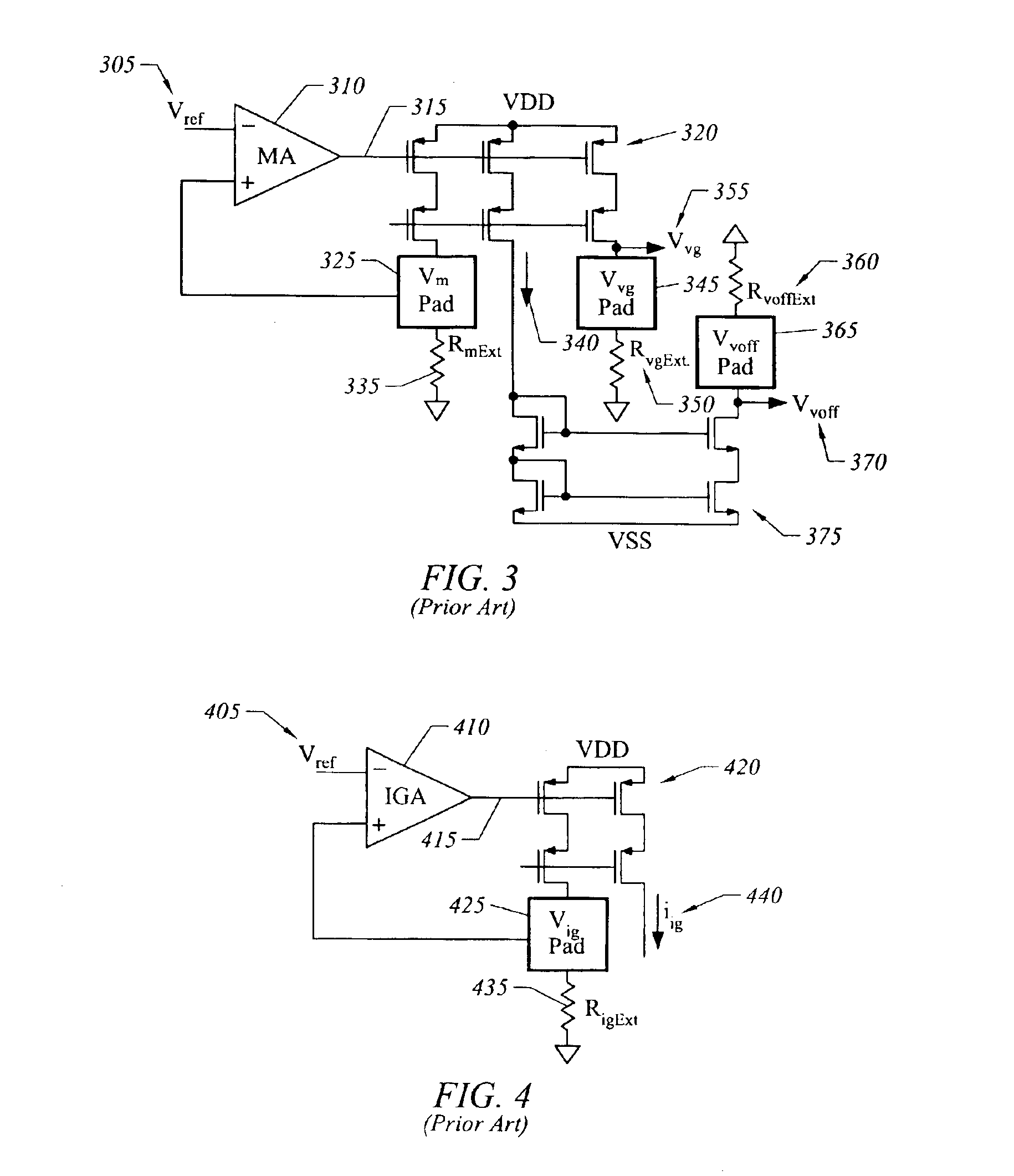Digital adjustment of gain and offset for digital to analog converters
a digital to analog converter and gain adjustment technology, applied in the field of integrated circuits, can solve the problems of increasing the cost and power consumption of the device, reducing the flexibility of the device, and requiring a fairly large range of resistances
- Summary
- Abstract
- Description
- Claims
- Application Information
AI Technical Summary
Benefits of technology
Problems solved by technology
Method used
Image
Examples
Embodiment Construction
[0021]The present invention is directed to improved analog to digital conversion circuitry incorporating features that increase the flexibility and lower the cost. In particular, the ability to digitally adjust gain and offset is provided, and circuitry to allow a single converter to provide either a voltage output or a current output is provided.
[0022]FIG. 1 illustrates a prior art voltage output digital to analog converter (DAC) circuitry. CSdac 110 is a current steering digital to analog converter (CSdac) that accepts digital input 180, voltage gain 170, voltage offset 160 and produces a current output on line 120, proportional to the binary value present on digital input 180. Current output 120 is coupled to the negative input of voltage amplifier 140 and to one side of feedback resistor 130. The positive input of voltage amplifier 140 is coupled to ground and the other side of feedback resistor 130 is coupled to the output of voltage amplifier 140. The output of voltage amplifi...
PUM
 Login to View More
Login to View More Abstract
Description
Claims
Application Information
 Login to View More
Login to View More - R&D
- Intellectual Property
- Life Sciences
- Materials
- Tech Scout
- Unparalleled Data Quality
- Higher Quality Content
- 60% Fewer Hallucinations
Browse by: Latest US Patents, China's latest patents, Technical Efficacy Thesaurus, Application Domain, Technology Topic, Popular Technical Reports.
© 2025 PatSnap. All rights reserved.Legal|Privacy policy|Modern Slavery Act Transparency Statement|Sitemap|About US| Contact US: help@patsnap.com



